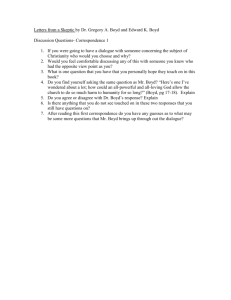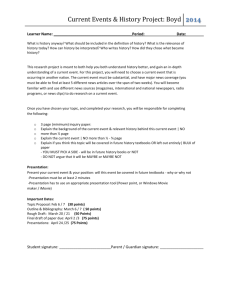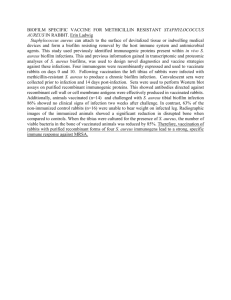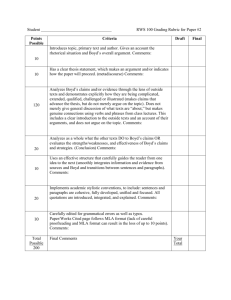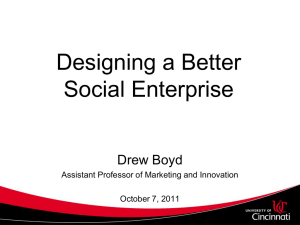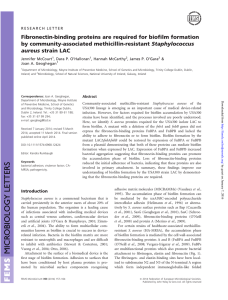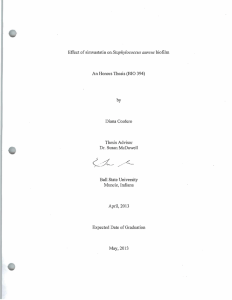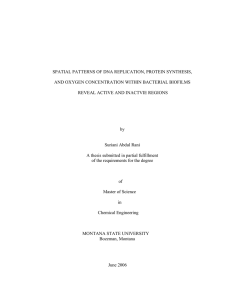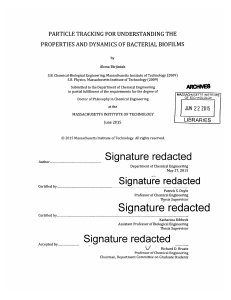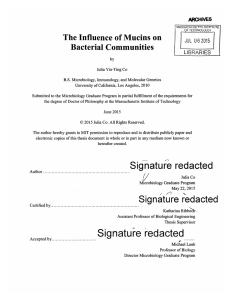Cellular respiration as a trigger for multicellular
advertisement
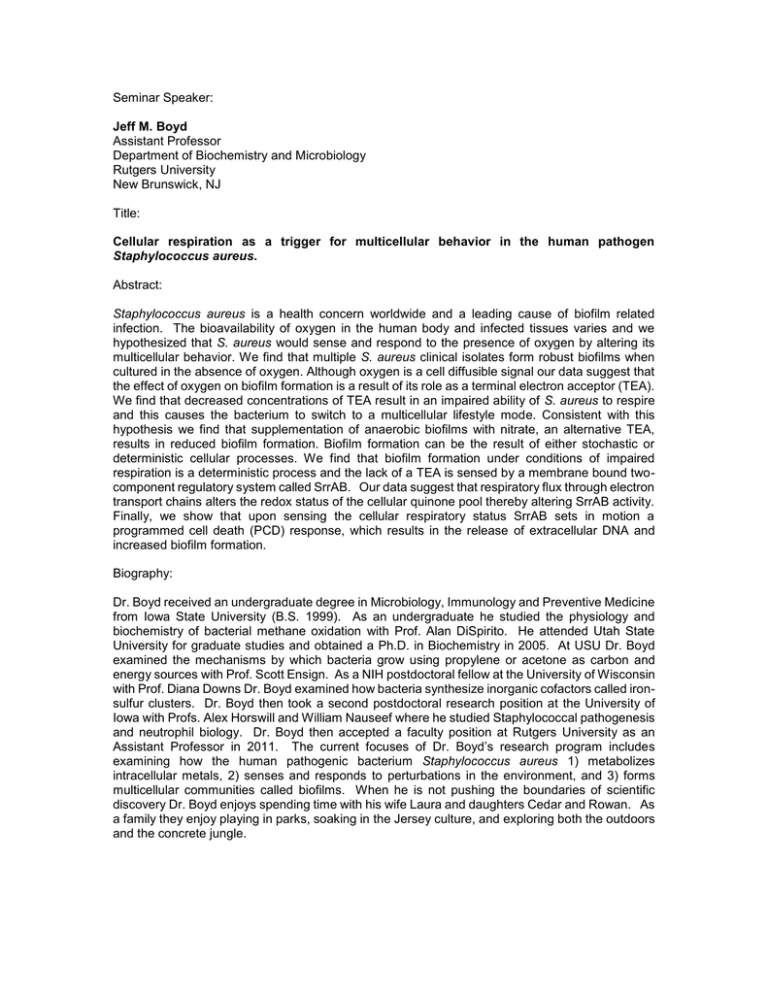
Seminar Speaker: Jeff M. Boyd Assistant Professor Department of Biochemistry and Microbiology Rutgers University New Brunswick, NJ Title: Cellular respiration as a trigger for multicellular behavior in the human pathogen Staphylococcus aureus. Abstract: Staphylococcus aureus is a health concern worldwide and a leading cause of biofilm related infection. The bioavailability of oxygen in the human body and infected tissues varies and we hypothesized that S. aureus would sense and respond to the presence of oxygen by altering its multicellular behavior. We find that multiple S. aureus clinical isolates form robust biofilms when cultured in the absence of oxygen. Although oxygen is a cell diffusible signal our data suggest that the effect of oxygen on biofilm formation is a result of its role as a terminal electron acceptor (TEA). We find that decreased concentrations of TEA result in an impaired ability of S. aureus to respire and this causes the bacterium to switch to a multicellular lifestyle mode. Consistent with this hypothesis we find that supplementation of anaerobic biofilms with nitrate, an alternative TEA, results in reduced biofilm formation. Biofilm formation can be the result of either stochastic or deterministic cellular processes. We find that biofilm formation under conditions of impaired respiration is a deterministic process and the lack of a TEA is sensed by a membrane bound twocomponent regulatory system called SrrAB. Our data suggest that respiratory flux through electron transport chains alters the redox status of the cellular quinone pool thereby altering SrrAB activity. Finally, we show that upon sensing the cellular respiratory status SrrAB sets in motion a programmed cell death (PCD) response, which results in the release of extracellular DNA and increased biofilm formation. Biography: Dr. Boyd received an undergraduate degree in Microbiology, Immunology and Preventive Medicine from Iowa State University (B.S. 1999). As an undergraduate he studied the physiology and biochemistry of bacterial methane oxidation with Prof. Alan DiSpirito. He attended Utah State University for graduate studies and obtained a Ph.D. in Biochemistry in 2005. At USU Dr. Boyd examined the mechanisms by which bacteria grow using propylene or acetone as carbon and energy sources with Prof. Scott Ensign. As a NIH postdoctoral fellow at the University of Wisconsin with Prof. Diana Downs Dr. Boyd examined how bacteria synthesize inorganic cofactors called ironsulfur clusters. Dr. Boyd then took a second postdoctoral research position at the University of Iowa with Profs. Alex Horswill and William Nauseef where he studied Staphylococcal pathogenesis and neutrophil biology. Dr. Boyd then accepted a faculty position at Rutgers University as an Assistant Professor in 2011. The current focuses of Dr. Boyd’s research program includes examining how the human pathogenic bacterium Staphylococcus aureus 1) metabolizes intracellular metals, 2) senses and responds to perturbations in the environment, and 3) forms multicellular communities called biofilms. When he is not pushing the boundaries of scientific discovery Dr. Boyd enjoys spending time with his wife Laura and daughters Cedar and Rowan. As a family they enjoy playing in parks, soaking in the Jersey culture, and exploring both the outdoors and the concrete jungle.
